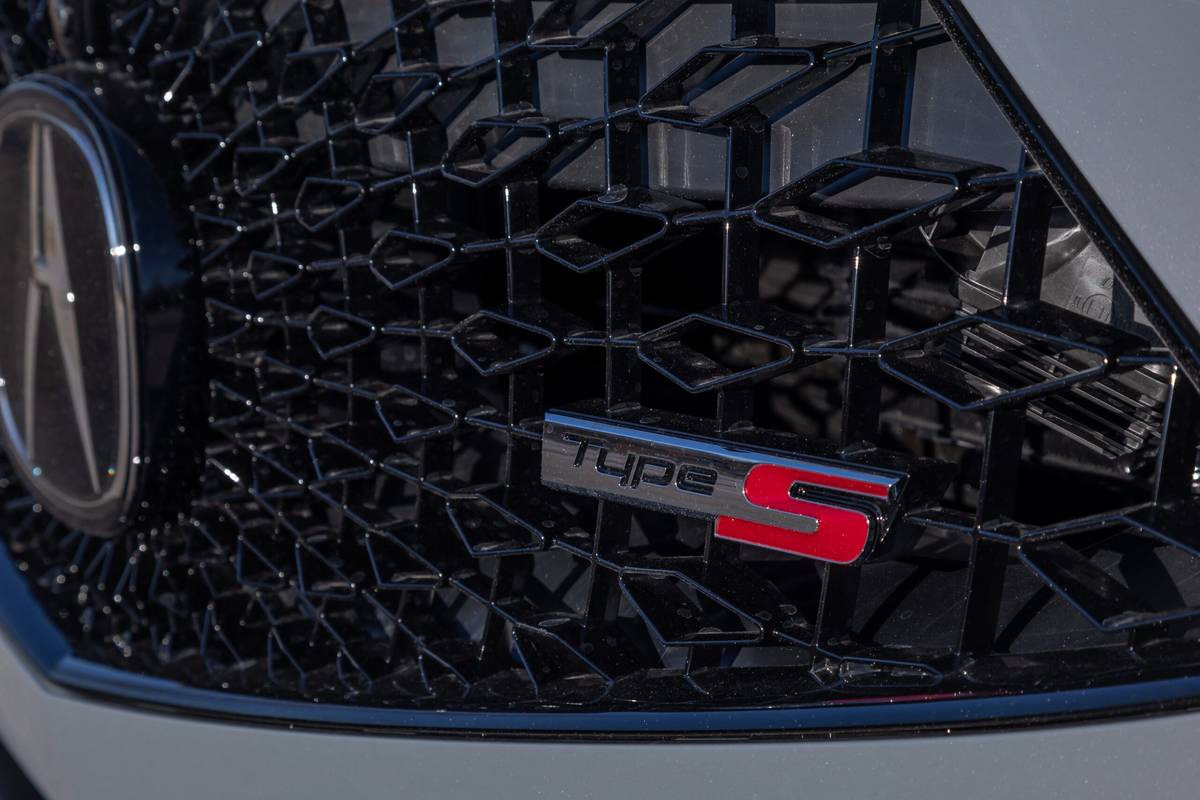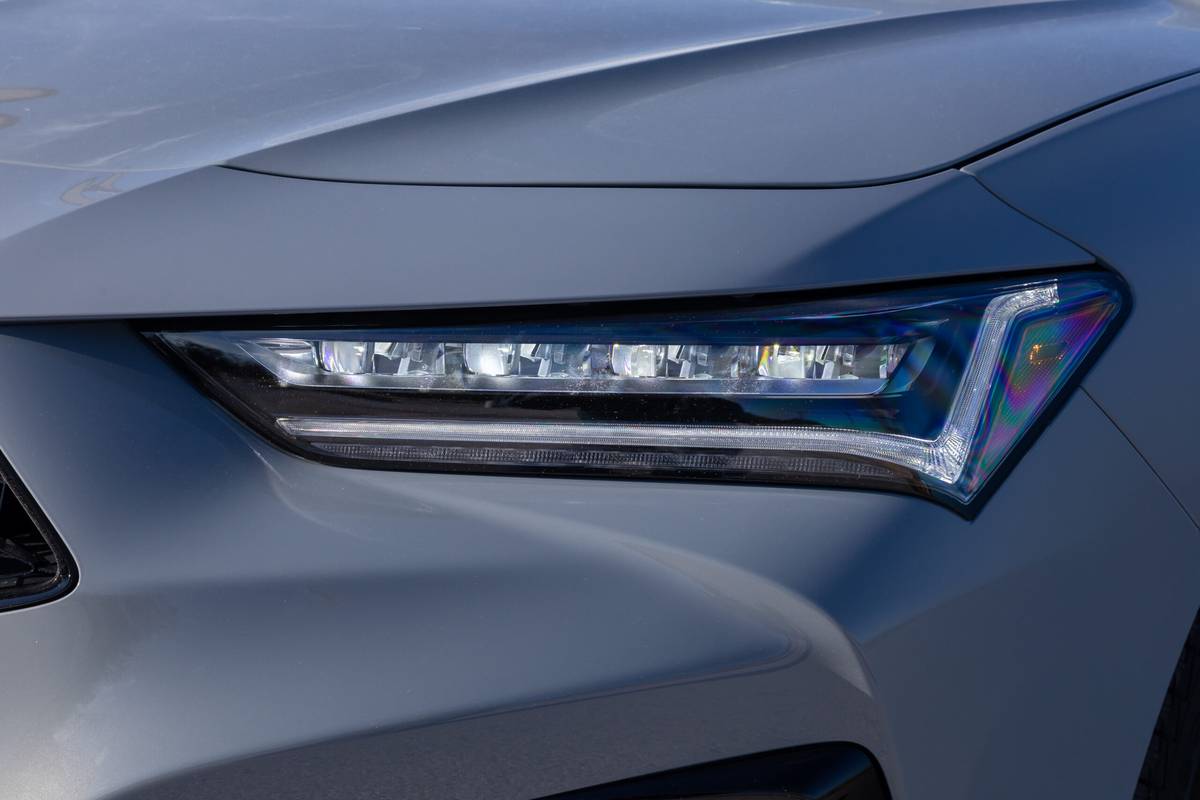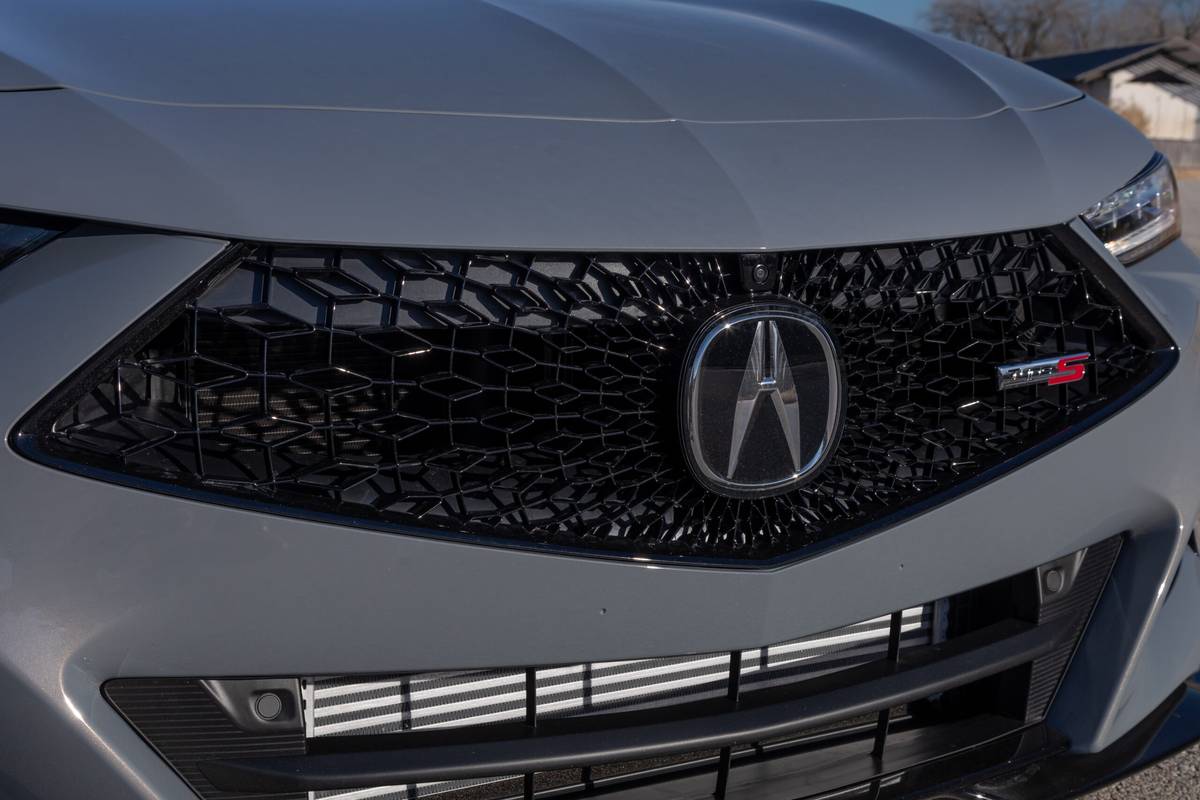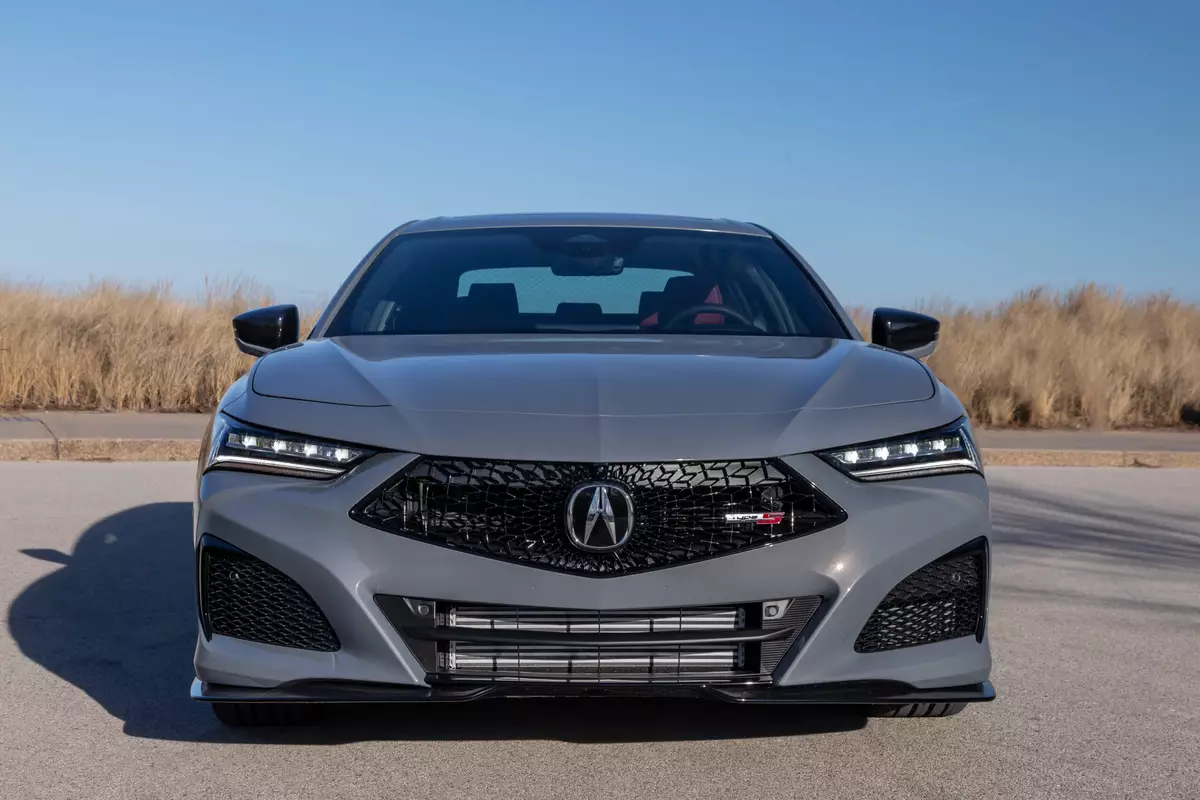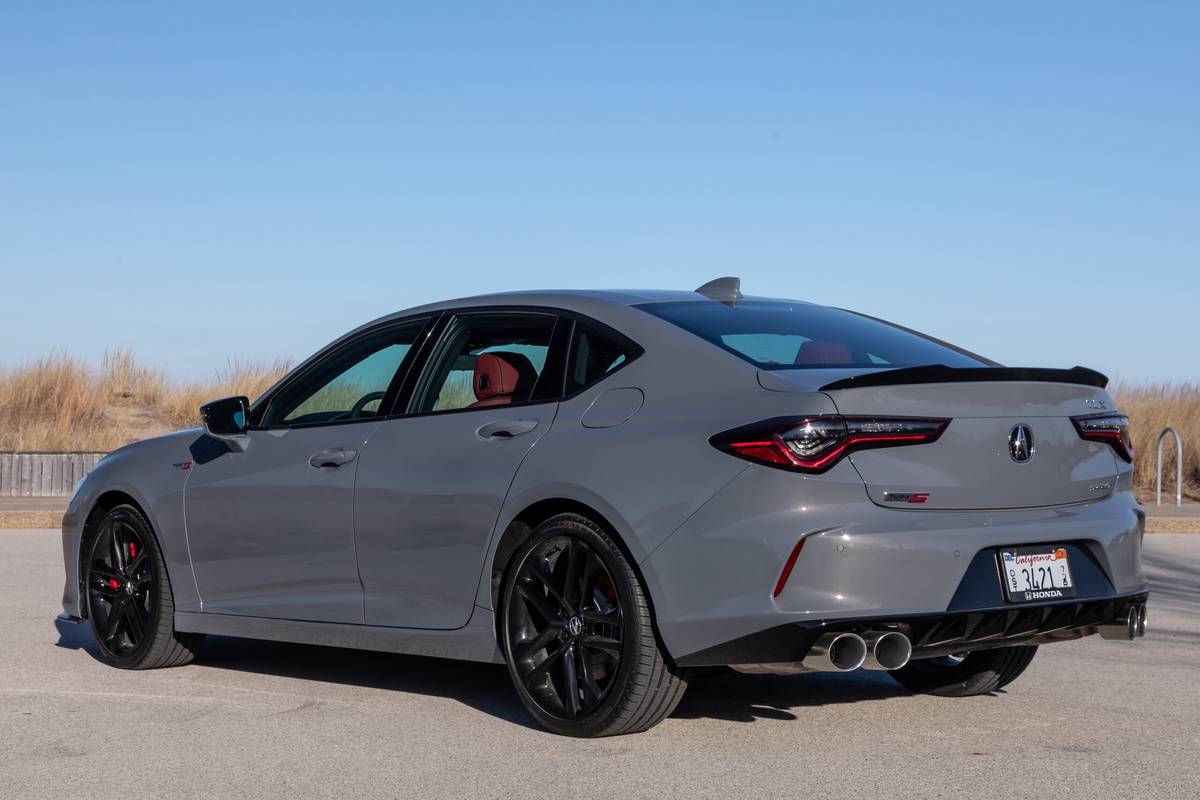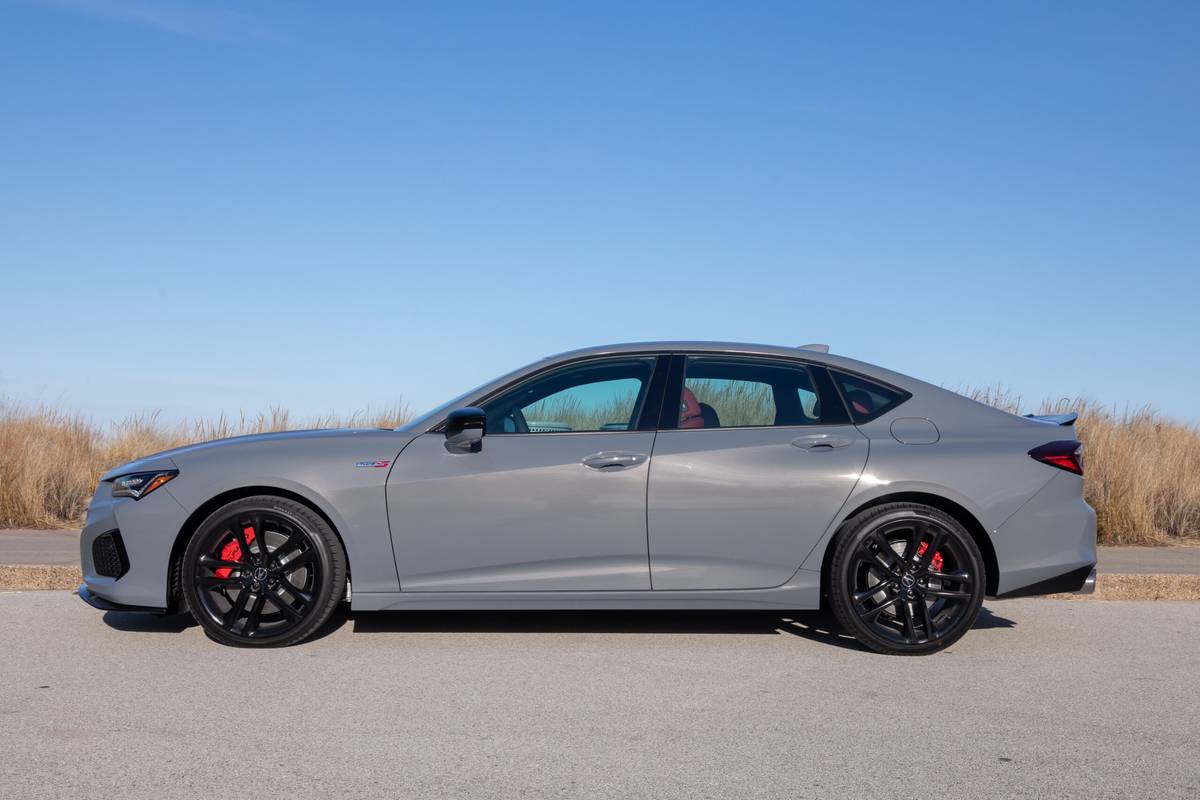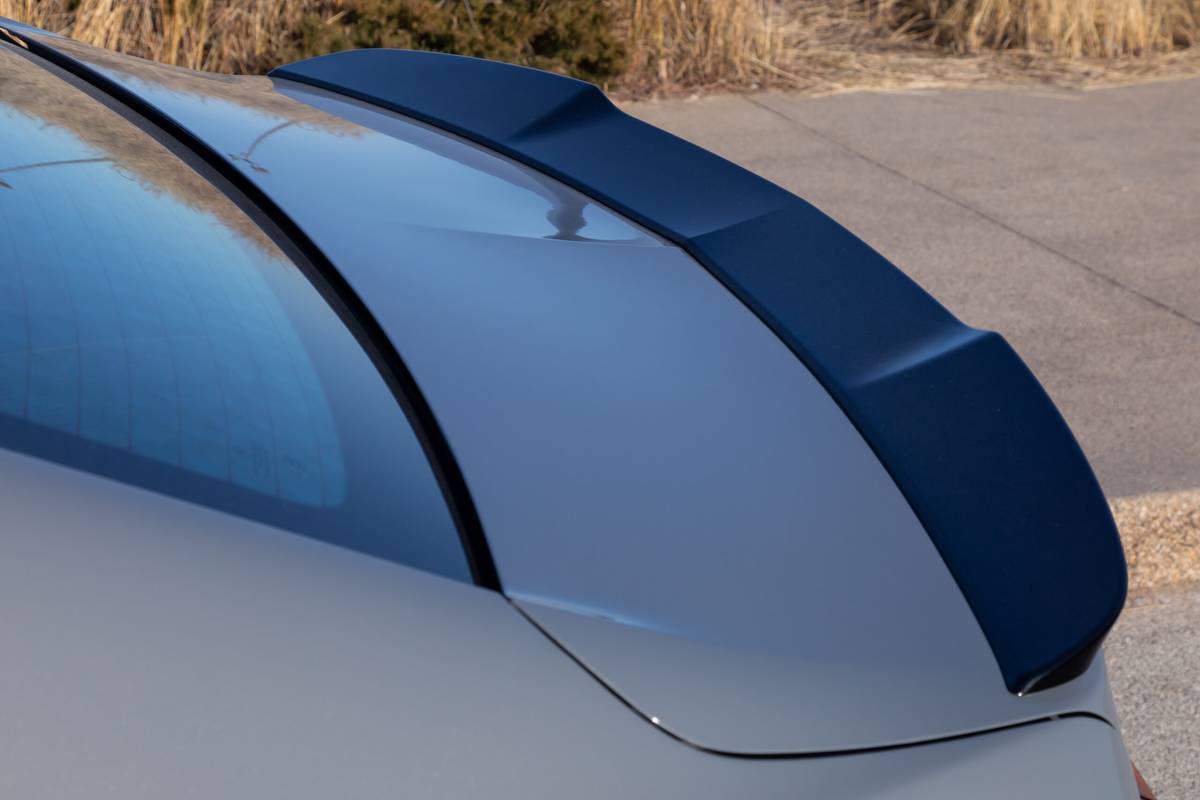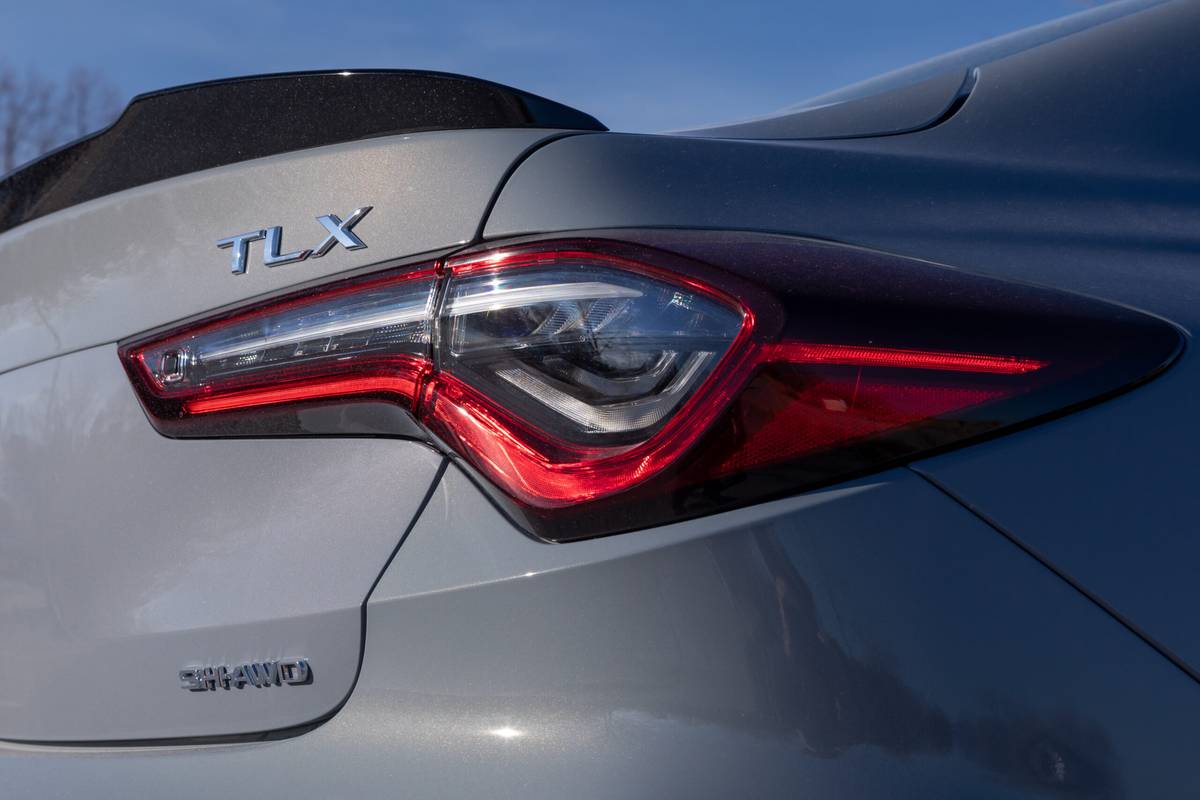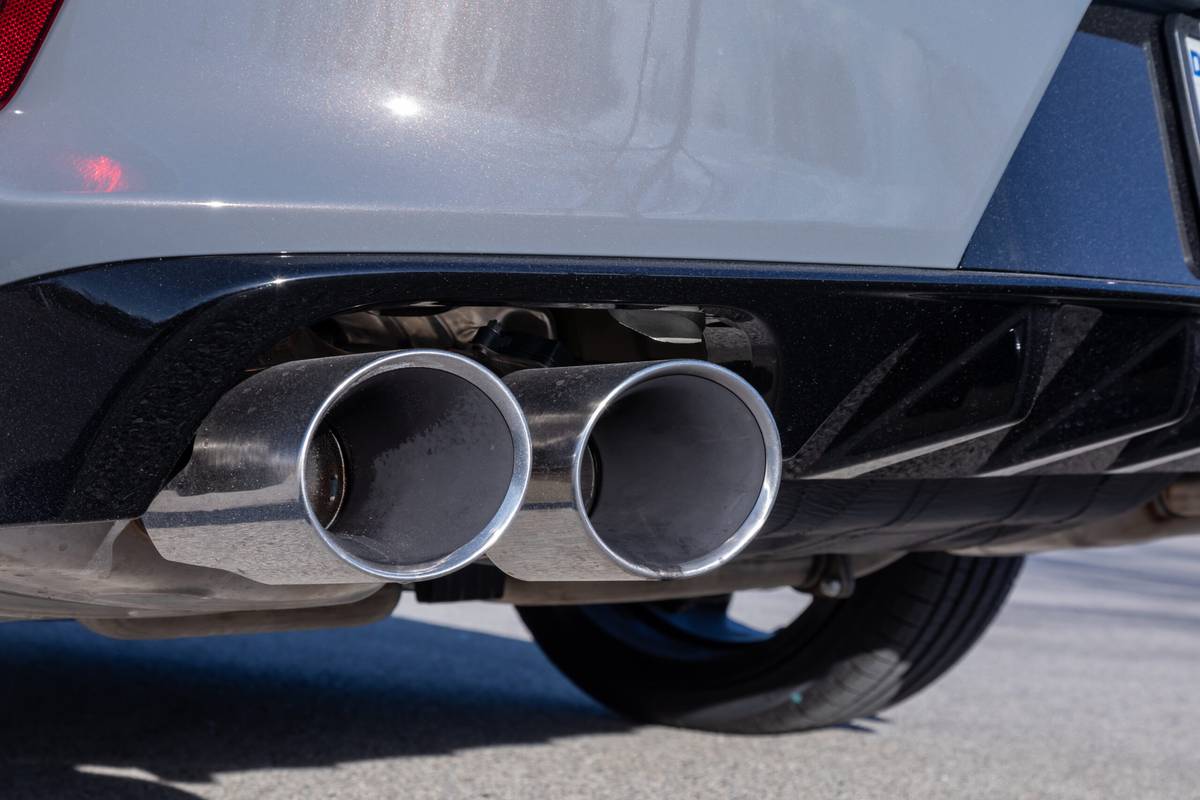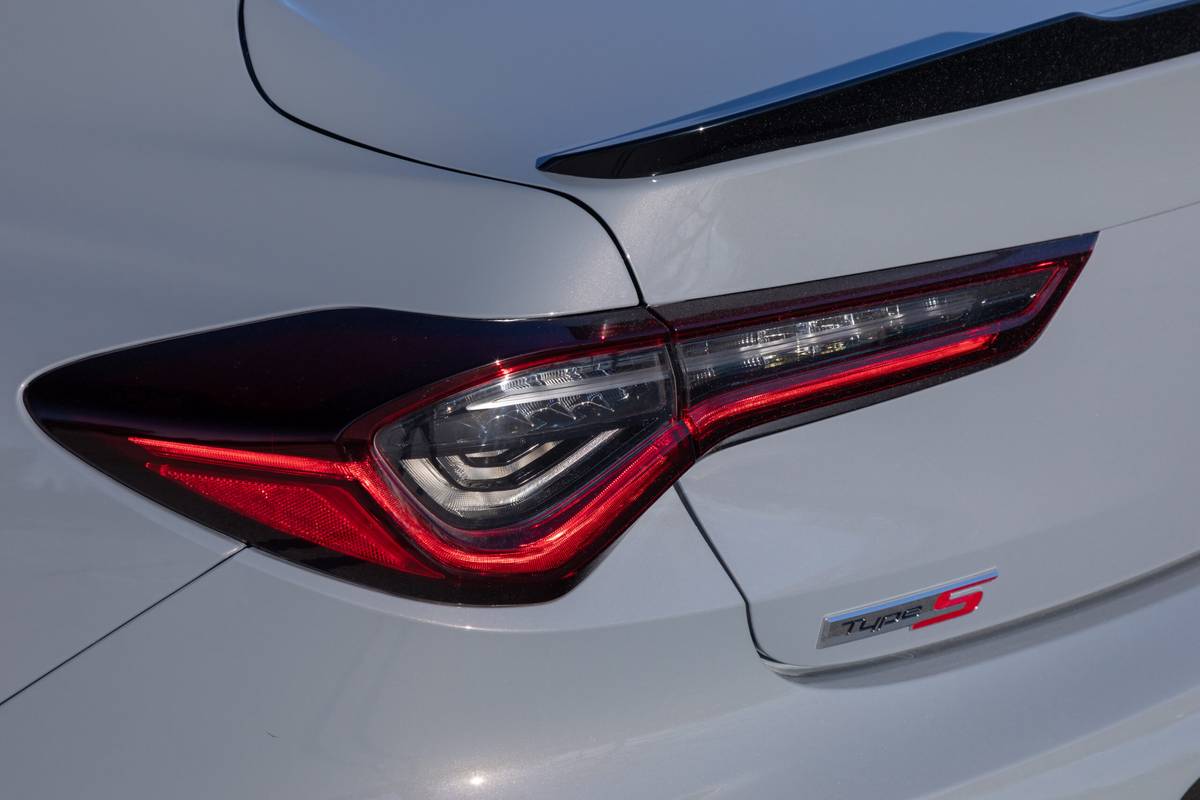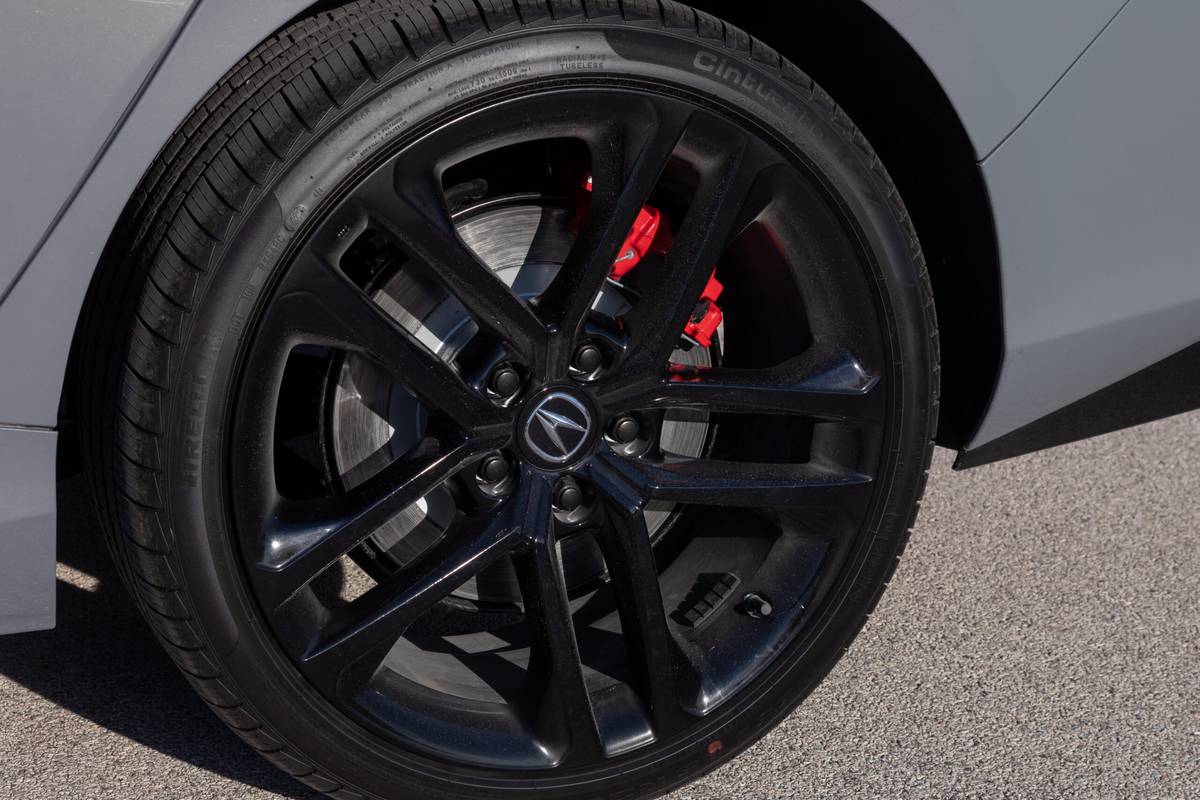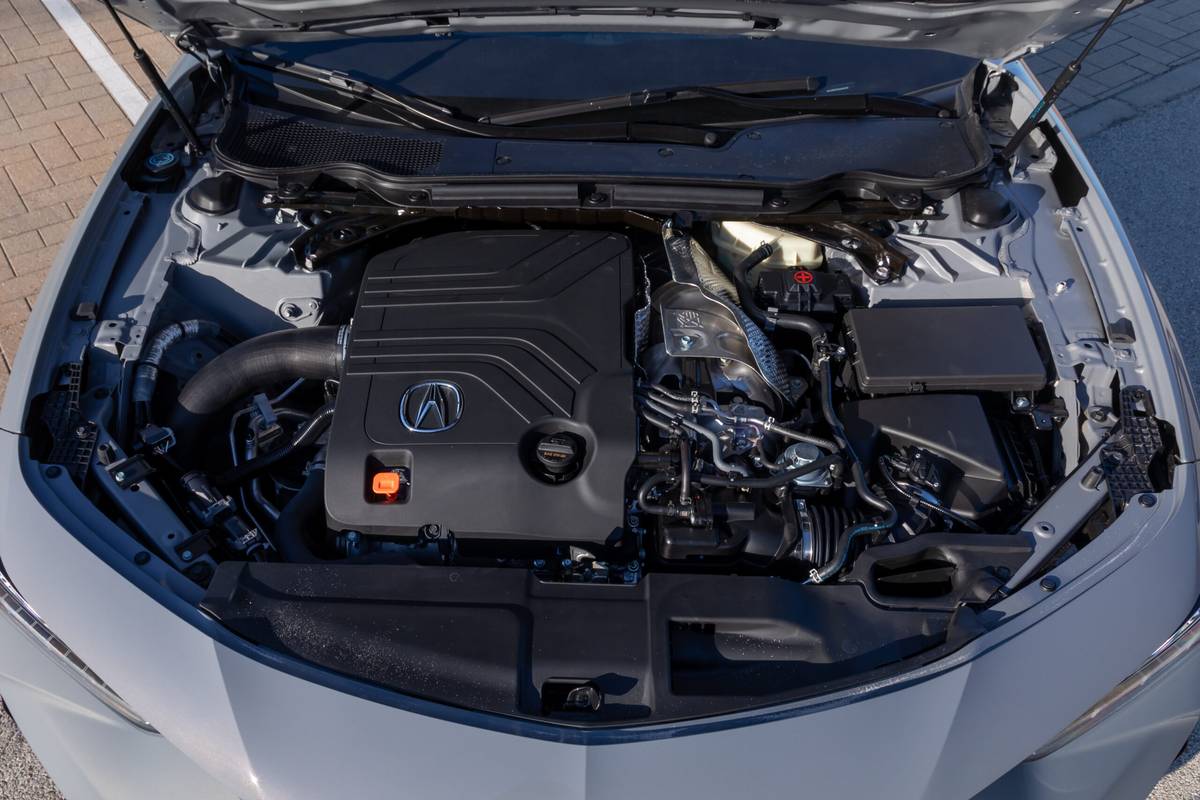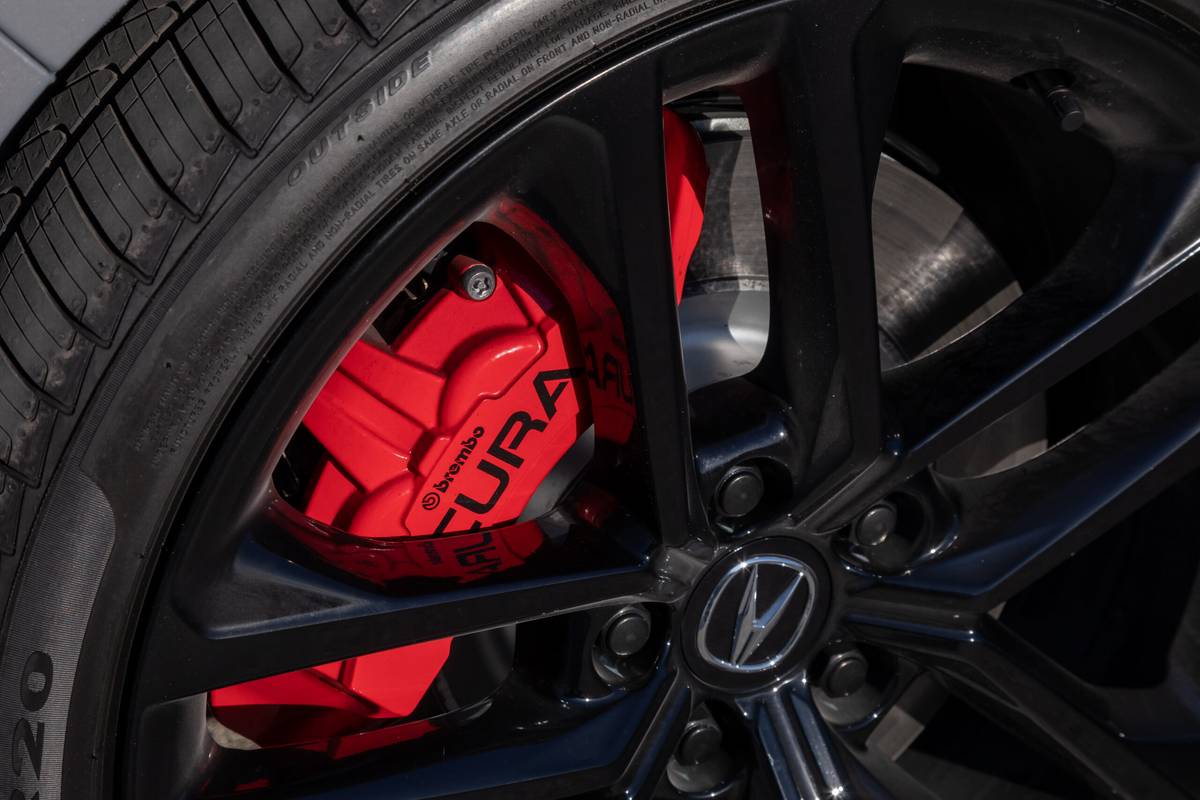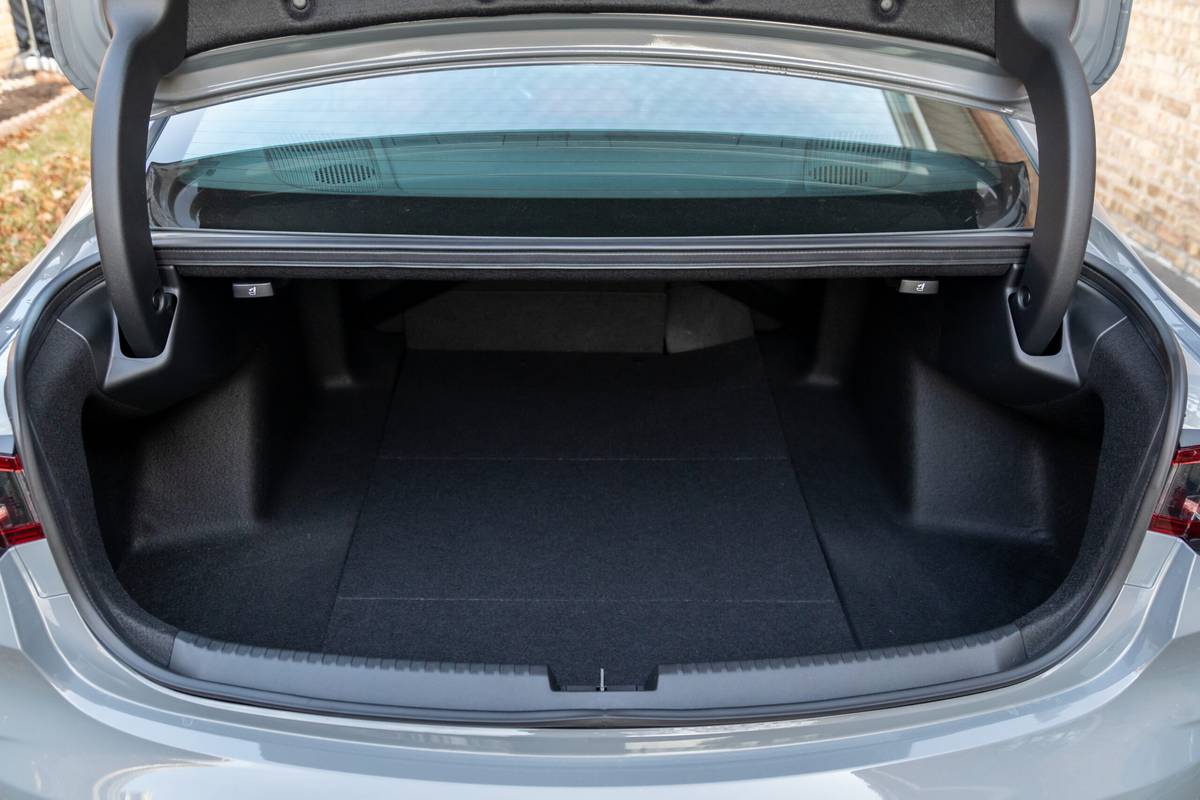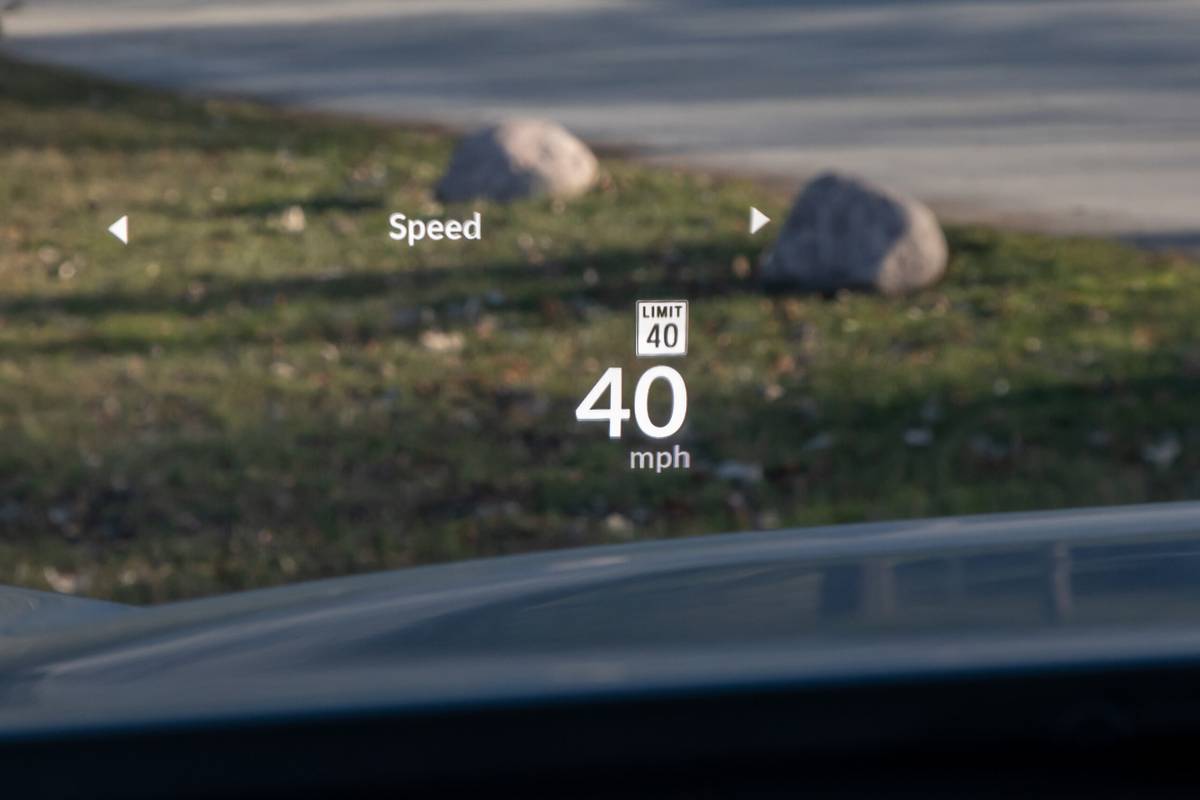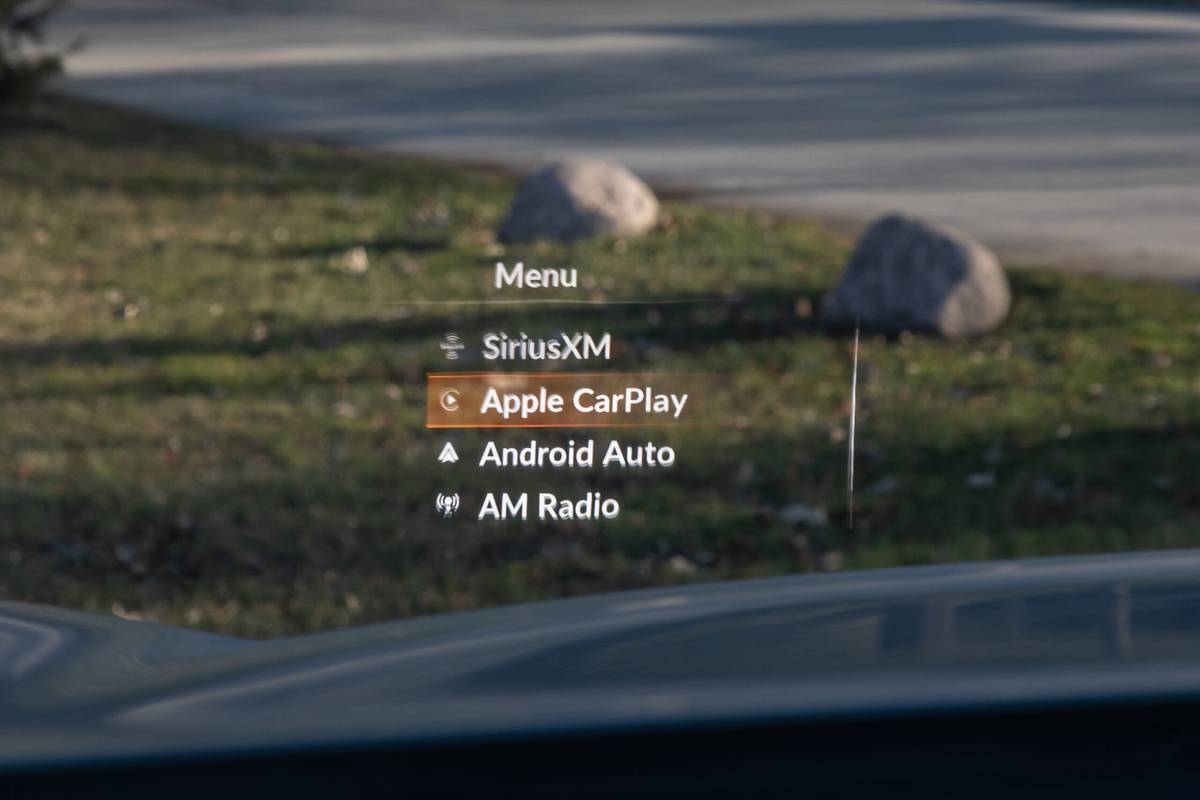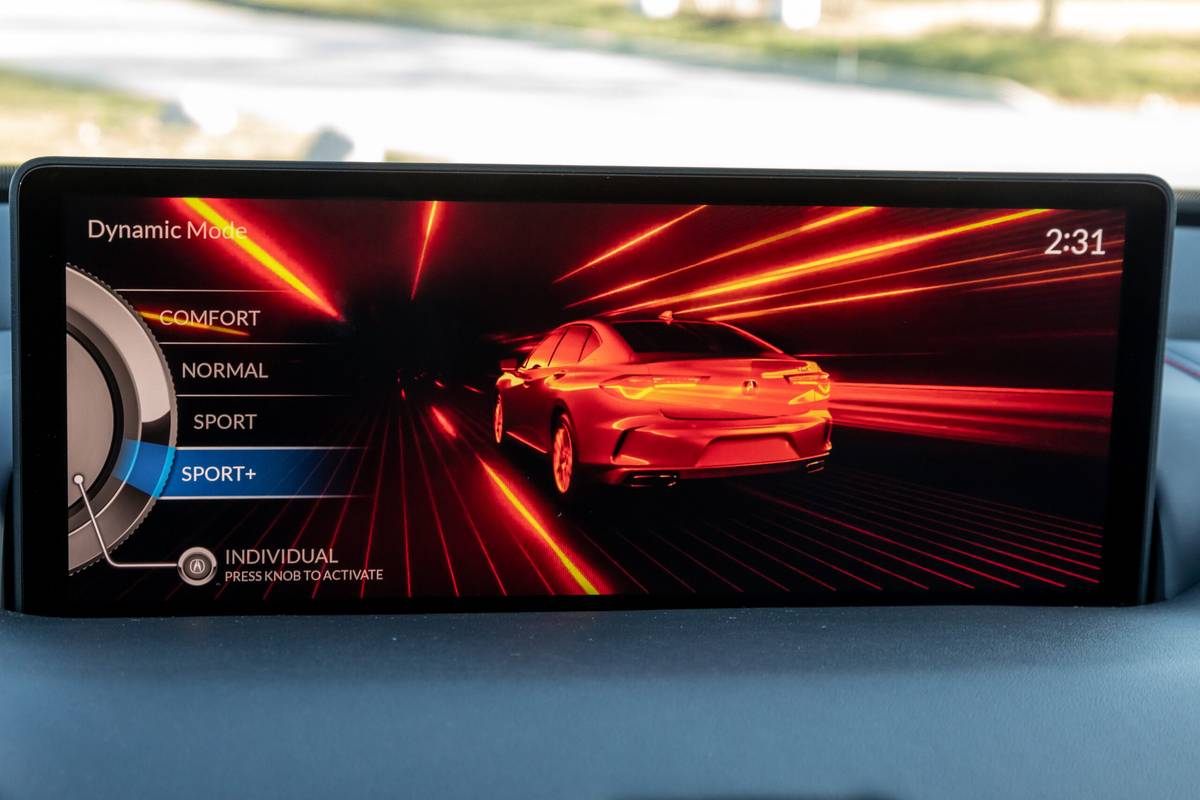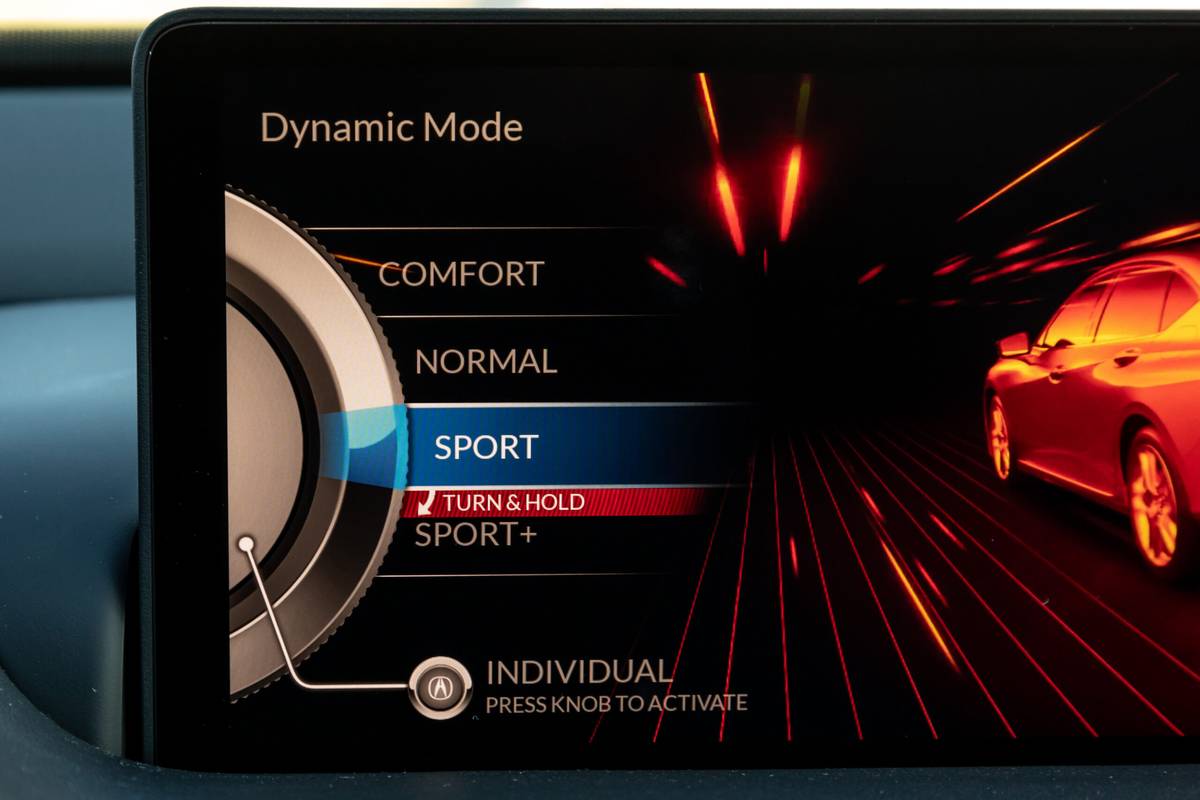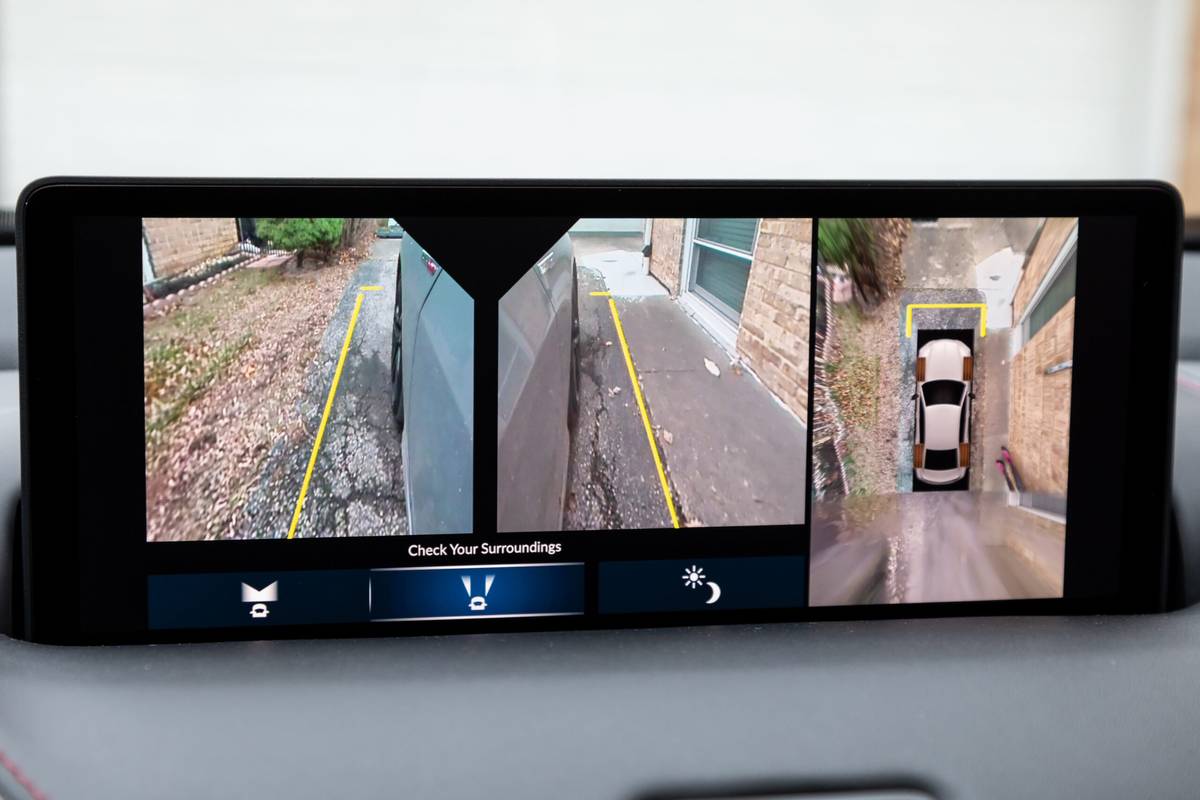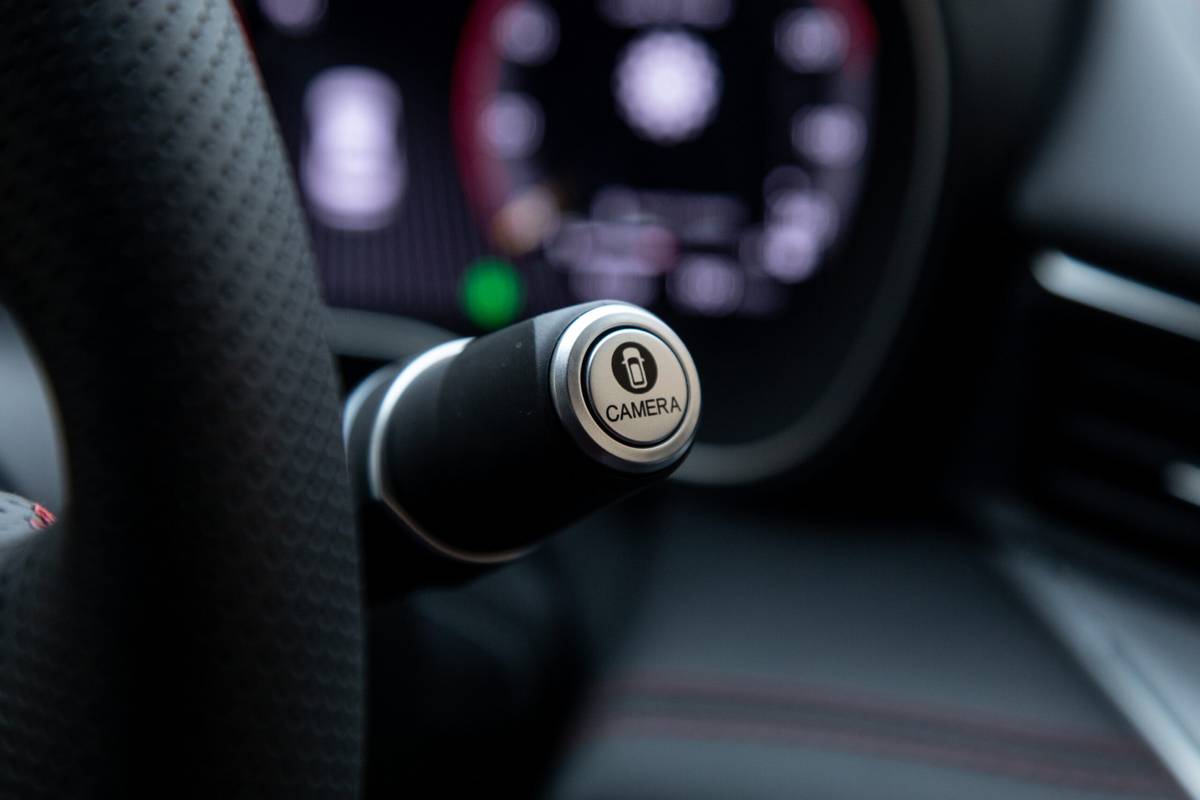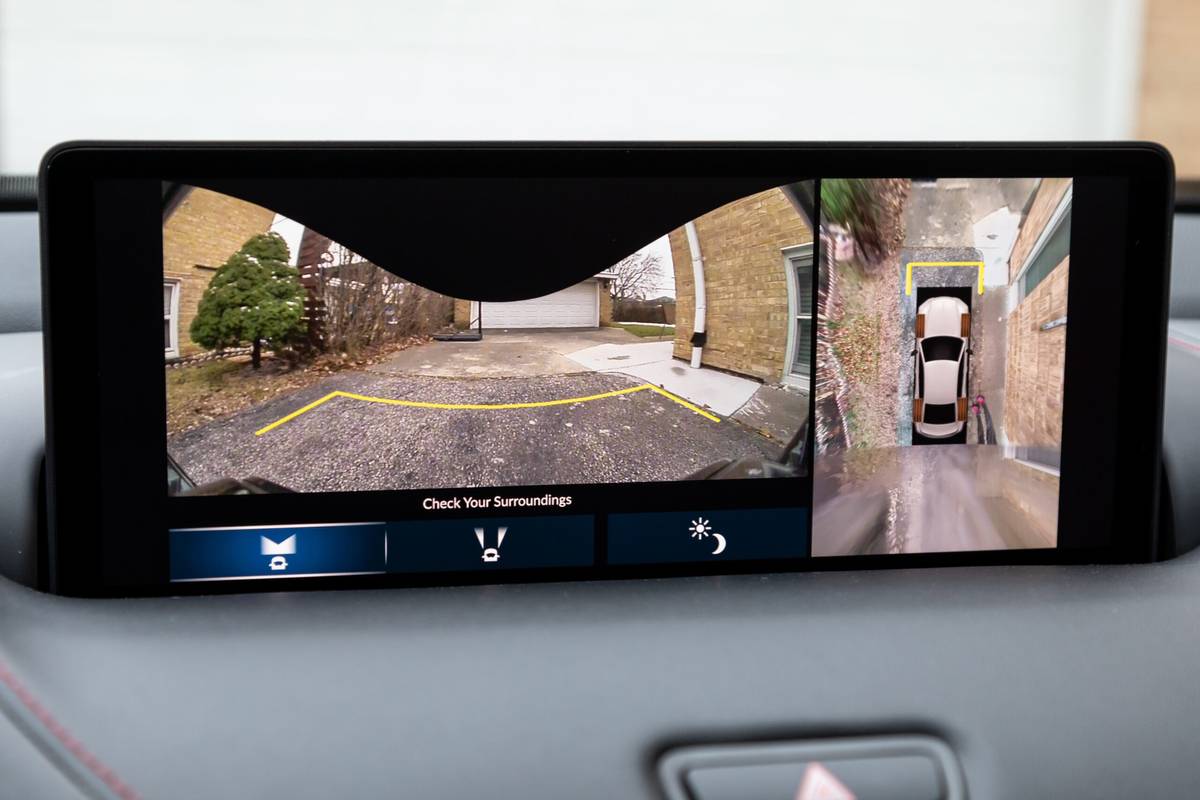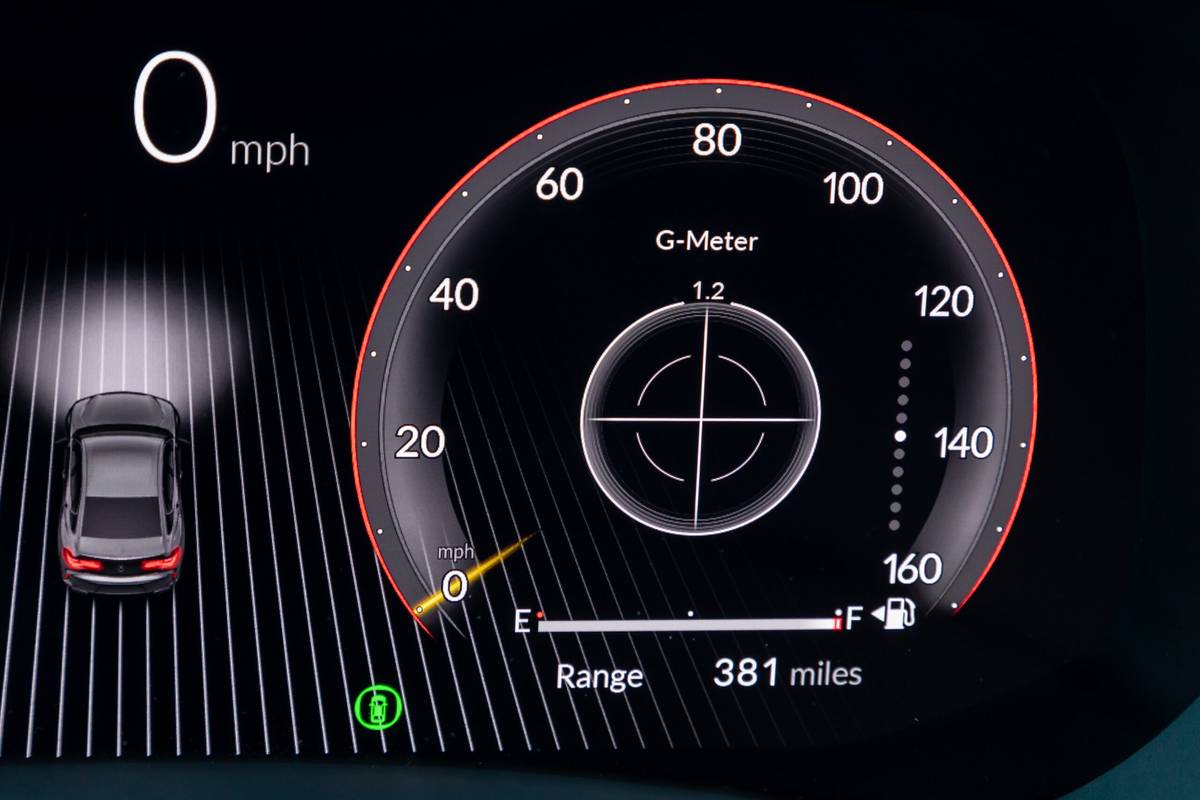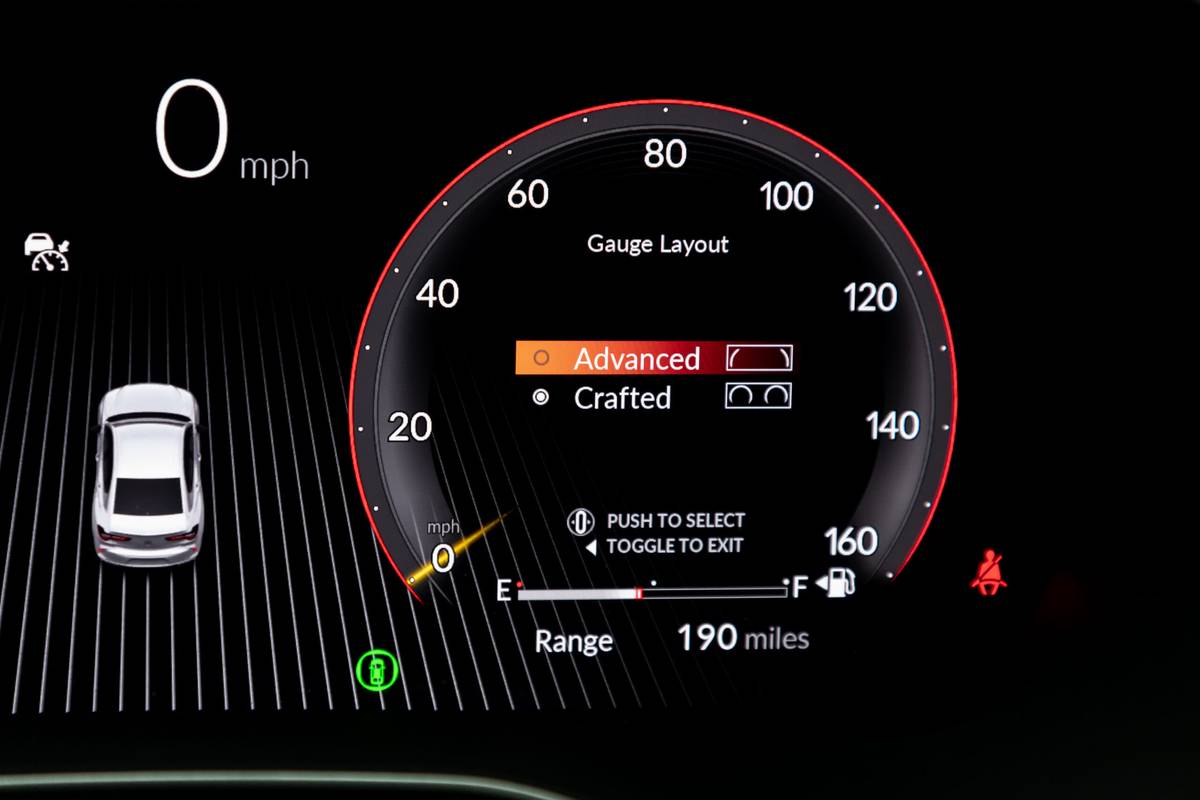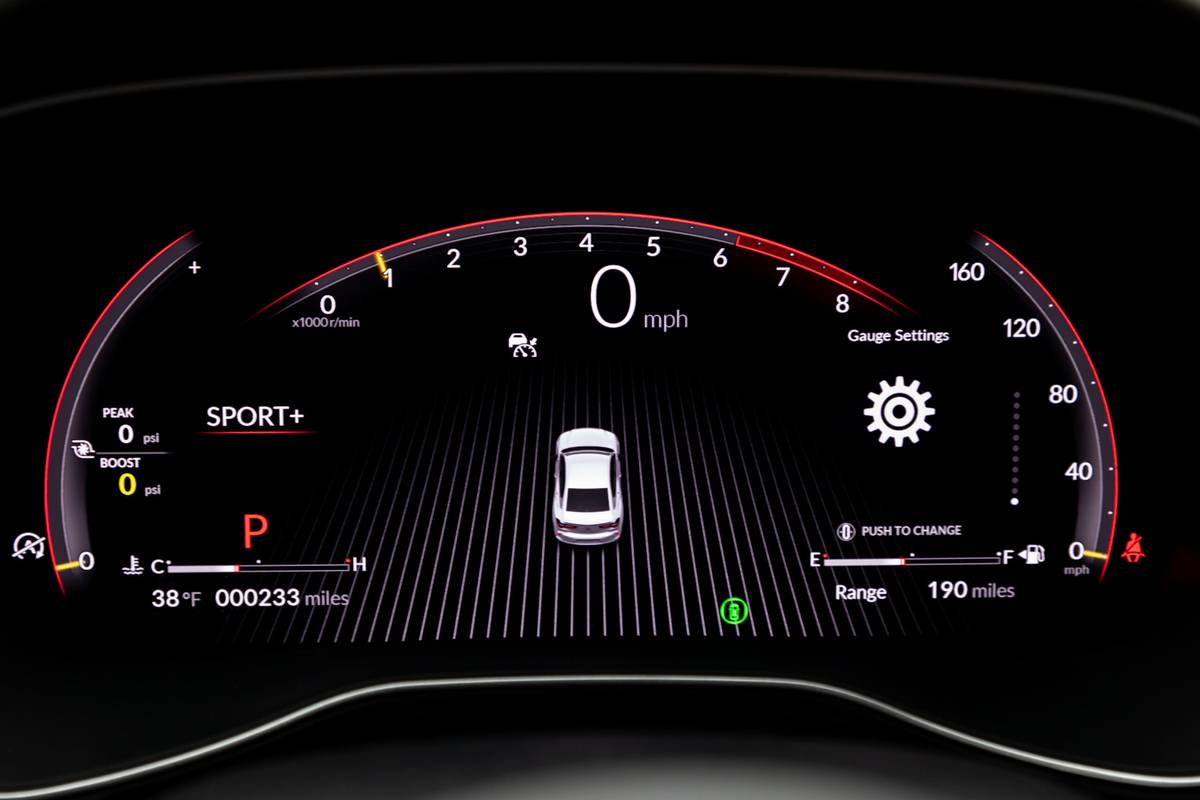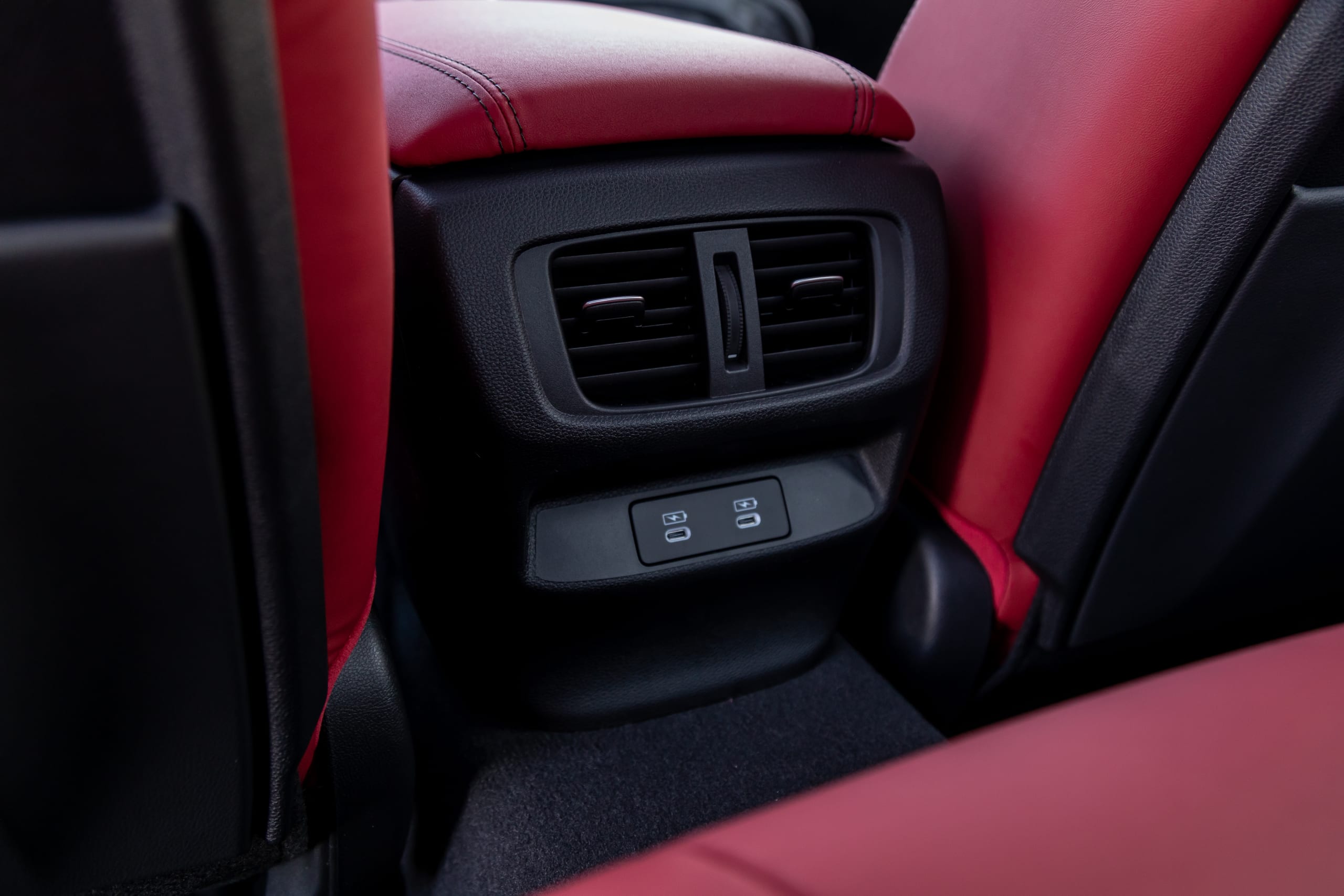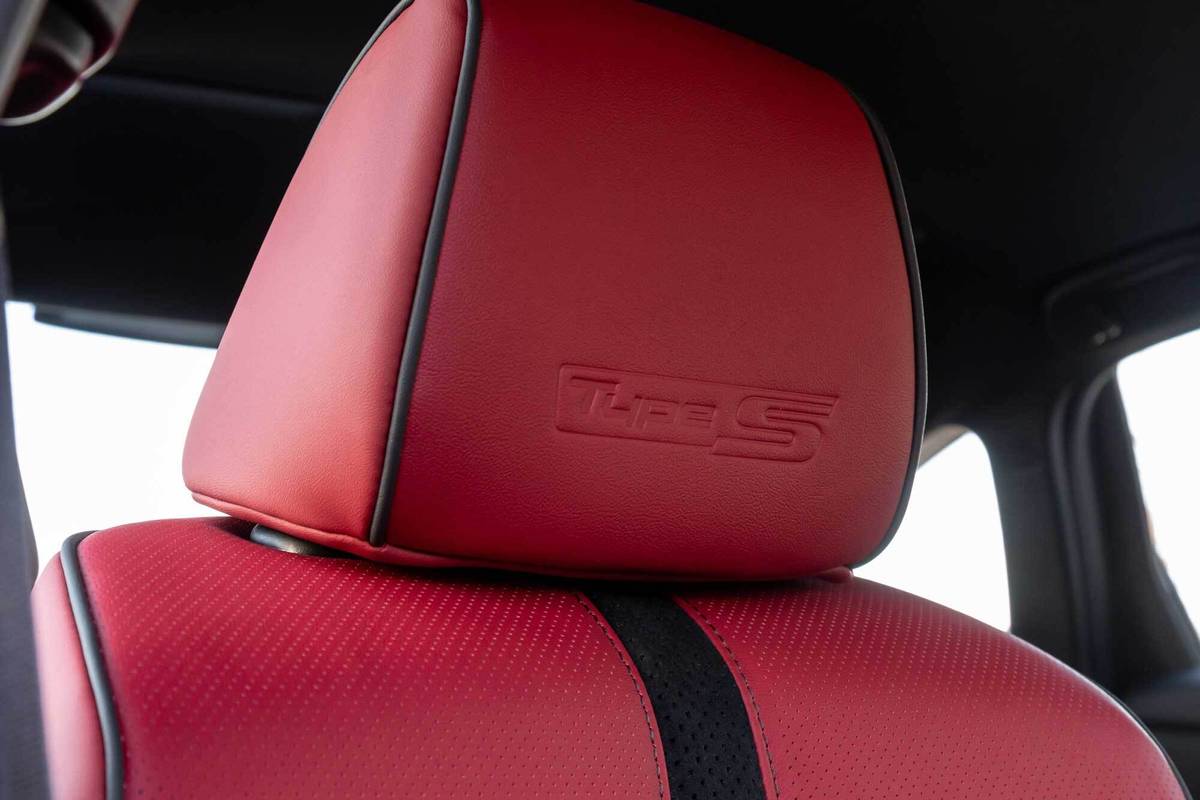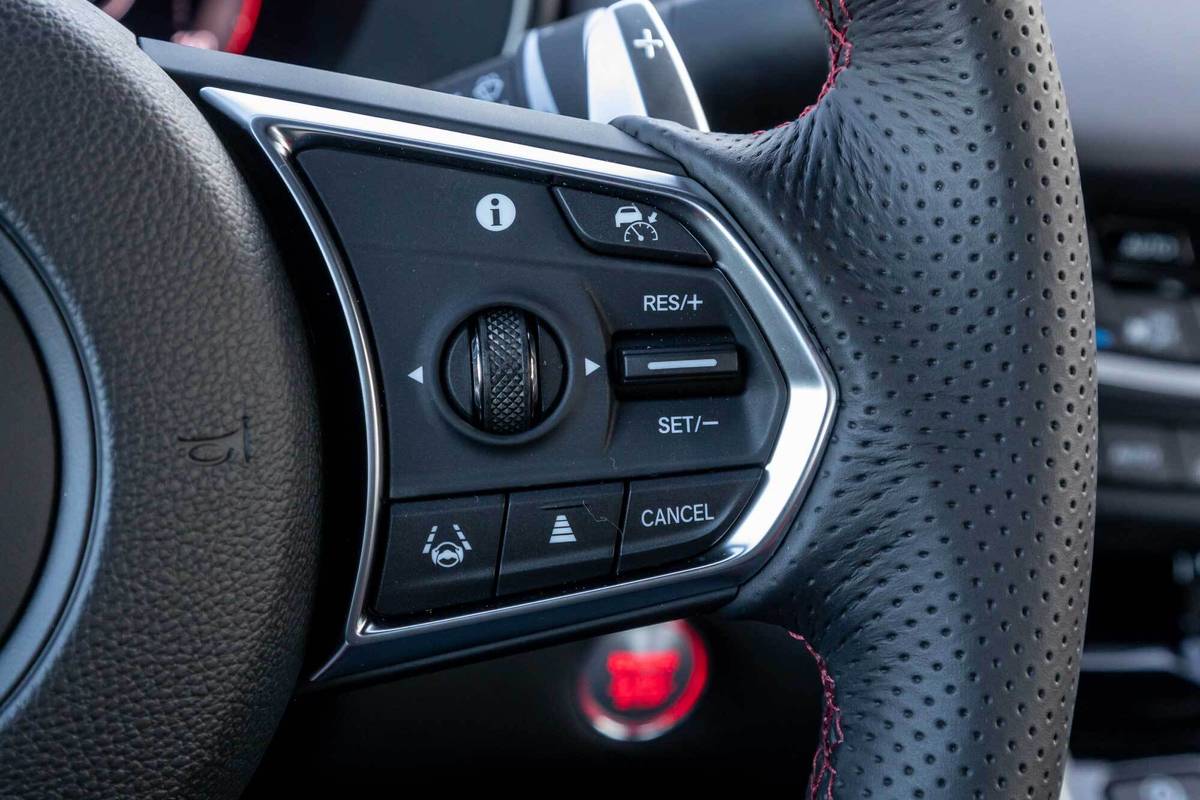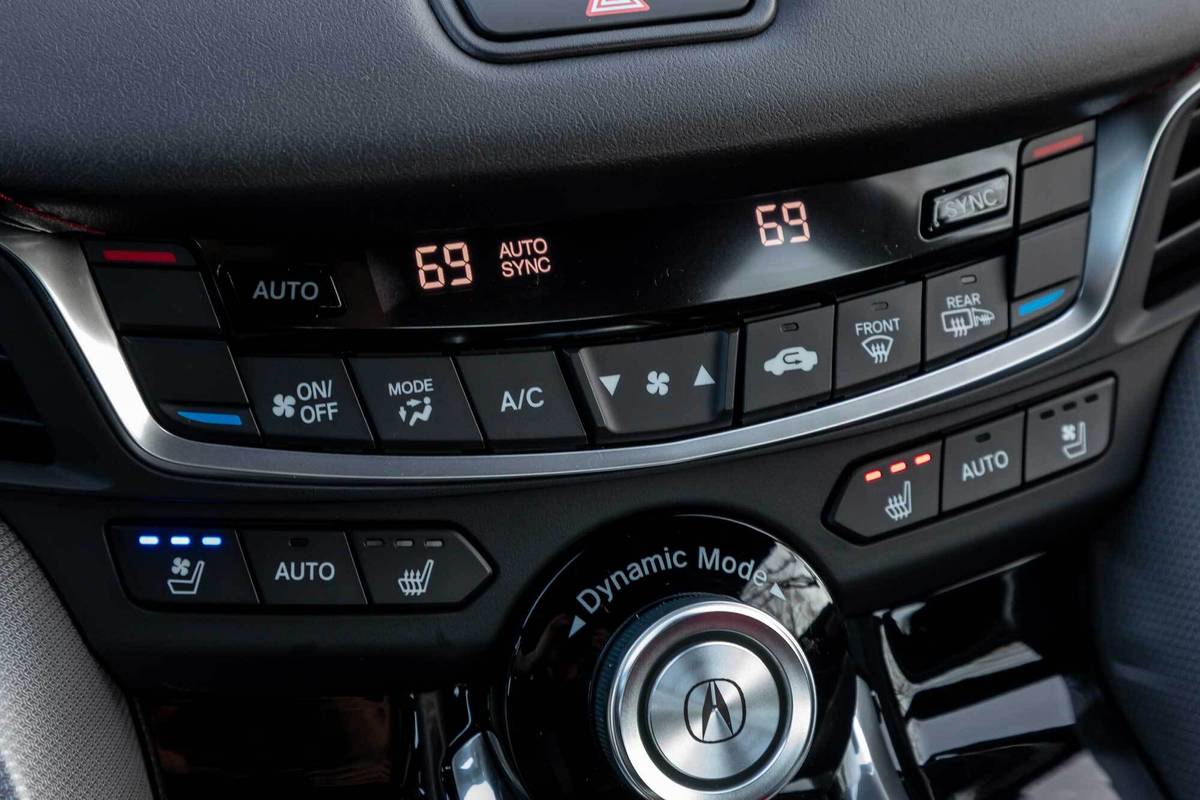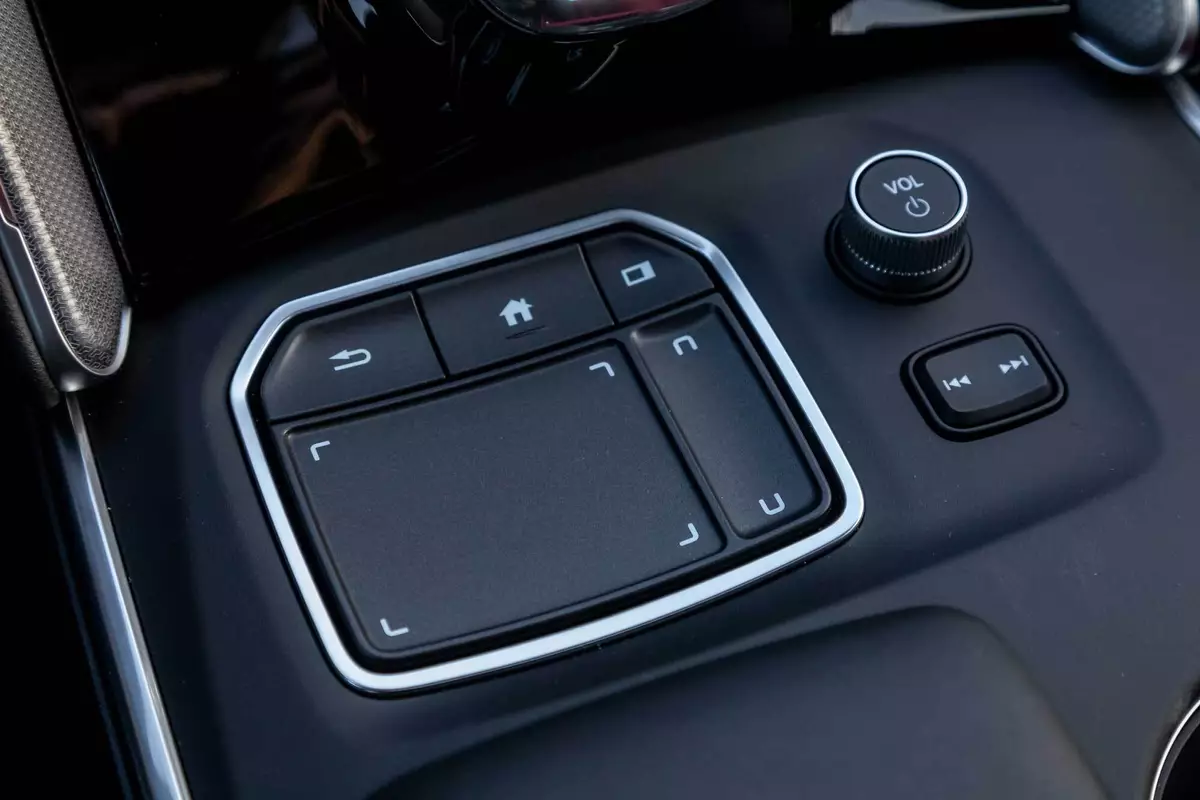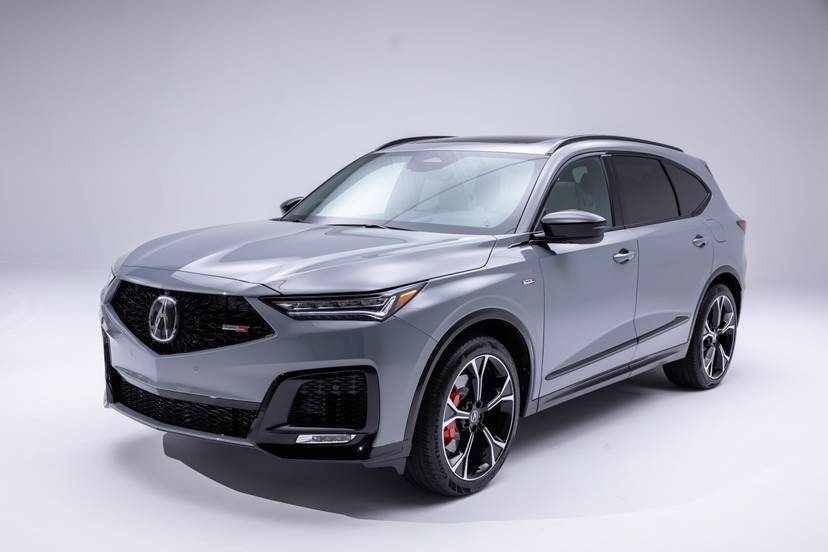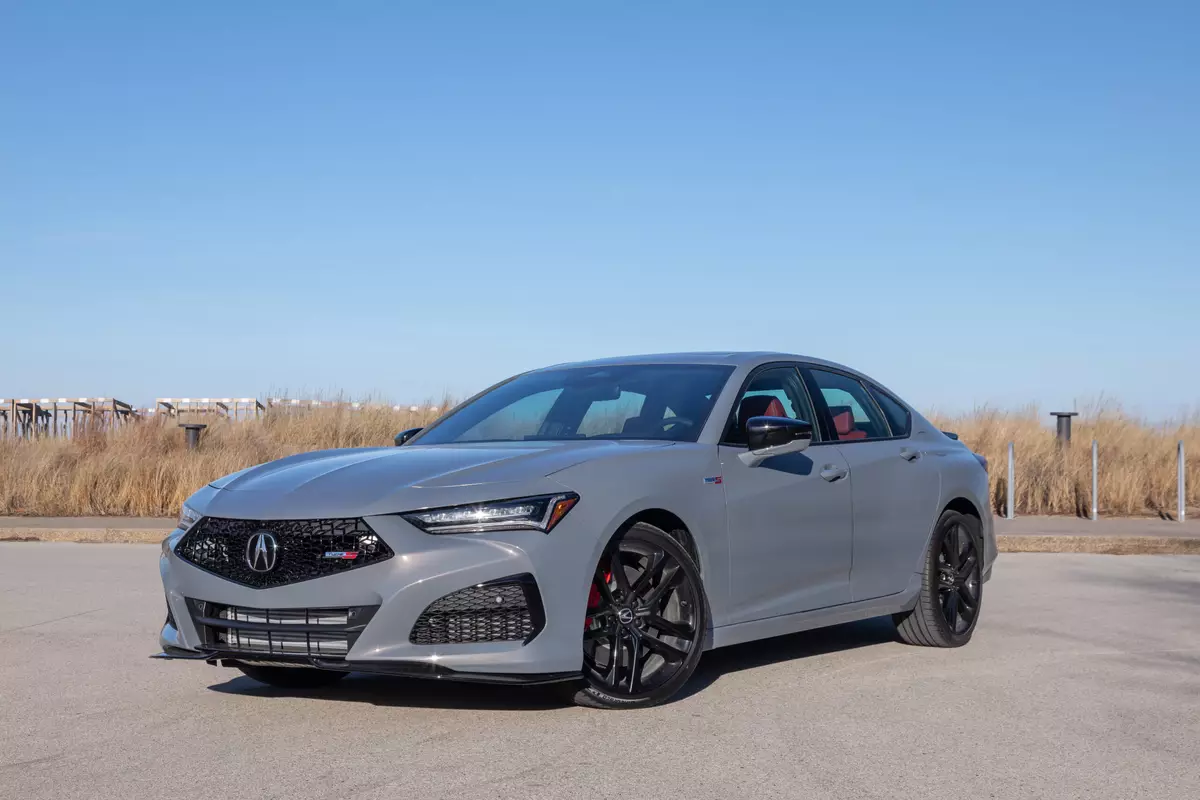
The verdict: The Acura TLX gets a few subtle updates for 2024 that help keep it fresh, and the high-performance Type S variant continues to deliver invigorating acceleration and handling while remaining daily-driver comfortable.
Versus the competition: The TLX Type S stacks up nicely against the performance-oriented six-cylinder versions of rival sedans from Audi, BMW, Cadillac and Genesis, especially in terms of features for the money. The TLX is also notably larger overall than similarly priced compact luxury sedans like the BMW M340i and Genesis G70.
Even though the class isn’t as prominent or robust as it once was, the luxury-brand sports sedan category is still quite diverse. Shoppers looking for a posh, performance-oriented four-door still have plenty of choices — and plenty of decisions to make. If budget is a primary concern, you can choose a relatively affordable turbocharged four-cylinder model and get upscale style and crisp cornering capabilities paired with decent pep; cars like the non-Type S Acura TLX, BMW 330i and Cadillac CT5 fall into this group. If you’re after all-out, racetrack-ready performance in your luxury sedan, opting for a ferocious machine like a BMW M3 or Cadillac CT5-V Blackwing will get you just that — but the M3 starts around $77,000 and the Blackwing commands around $95,000 to start.
But what if you want something in between these two extremes? What if you crave stronger acceleration and better handling than an entry-level four-cylinder car can provide, but can’t swing spending huge money on an ultra-expensive, stiff-riding track monster? Thankfully, there are plenty of options in this sweet spot, too — performance-oriented, six-cylinder-powered sedans like the Audi S4 and S5 Sportback, BMW M340i, non-Blackwing Cadillac CT5-V and the subject of this review: the Acura TLX Type S.
Related: 2024 Acura Integra Type S Review: S Is for Snazzy, Snarky and Spendy
The TLX was redesigned from the ground up for 2021, with the Type S joining the lineup midway through the model year. For 2024, the TLX line undergoes a mild mid-cycle refresh that brings a 12.3-inch digital gauge cluster in place of the previous analog gauges, a 12.3-inch infotainment screen instead of the previous 10.2-inch unit and front-end styling tweaks. For more details on the TLX’s updates for 2024, check out our Up Close article.
Everyday Performance
In place of the 272-horsepower, turbocharged 2.0-liter four-cylinder in other TLXs, the Type S gets a 355-hp, turbo 3.0-liter V-6. This engine delivers suitably gutsy acceleration with minimal turbo lag; it pulls smoothly and strongly from most any rpm, especially when you select the Sport or Sport+ drive mode (there are also Normal, Comfort and customizable Individual modes).
All TLXs have a 10-speed automatic transmission, and the version in the Type S is excellent; gear shifts are crisp, timely and very smooth. Unlike some dual-clutch automatic gearboxes, which can feel clunky and cantankerous in low-speed, part-throttle driving, this traditional 10-speed automatic is perfectly content to trundle around town smoothly, but it can also crack off quick, sharp shifts when you’ve got your foot to the floor. Selecting the Sport or Sport+ driving modes makes the shifts sharper yet, but still smooth.
The Sport+ mode essentially turns all the performance settings to 11: The exhaust note gets significantly snarlier and louder (with a wonderful, exotic-sounding growl at the upper reaches of the rev range), the adaptive suspension gets stiffer, and the gas-pedal response is more immediate. Acura says it retuned throttle response in Sport+ mode, and it was almost too quick for me at first. It took me a bit to acclimate to the hair-trigger accelerator pedal, and to the similarly touchy brakes and quick steering, but I did.
The Type S is the only TLX to get adaptive shocks. It also comes standard with 20-inch wheels; other TLXs ride on 19s. The ride of the Type S is taut even in the Comfort drive mode, and the suspension can pound over potholes and sharp bumps. The payoff for the stiffer ride is nicely balanced handling. Though the Type S has standard AWD and our test car came equipped with Pirelli Cinturato P7 all-season tires (high-performance summer tires are optional), the roads around our Chicago headquarters were slick with nearly freezing rain and slush during our test, so I didn’t really hustle it through any corners, but the TLX’s composure and solid body structure impressed nonetheless. Its cornering capabilities aren’t as razor-sharp as a smaller, track-focused machine; its heft (around 4,200 pounds) is apparent, but it’s more than agile enough to be entertaining on a twisty road.
New and Not So New (or Desirable)
The new digital gauge cluster and upsize infotainment screen both do their part to keep the TLX feeling fresh. The cluster offers a choice of two gauge layouts, both of which have distinct readouts based on the selected drive mode (the Sport+ mode adds a peak turbo boost display, for example). The infotainment screen grows mainly in width, not height, which is fine — that way it doesn’t impede the view out the windshield.
The bummer is that Acura is sticking with its True Touchpad Interface infotainment control system. Instead of a touchscreen, it uses a console-mounted touchpad (with an ergonomic padded wrist rest) for all infotainment functions. Acura’s logic is that this arrangement allows the screen to be located closer to the windshield so the driver doesn’t need to look as far away from the road to focus on it. The touchpad itself is also smartly contoured, with a slightly concave shape and distinct ridges so its buttons can be identified by finger touch alone. Sounds good in theory, but in practice — actually quite a bit of practice, in multiple Acura test vehicles that use the system — our editors find it more tedious and distracting to use than a typical touchscreen-based infotainment system. It’s not a deal breaker, especially given the TLX’s many other merits, and owners should grow accustomed to it over time, but the True Touchpad Interface system isn’t great. Thankfully, most of the TLX’s other controls (e.g., the physical climate controls buttons) are straightforward and easy to use.
Giveth and Taketh
The Type S gets two standard features for 2024 that it didn’t offer previously: a 10.5-inch multifunction head-up display and a 360-degree camera system with multiple views, including a handy curb-view display so you don’t scuff those Berlina Black-finished 20-inch wheels. Both tech features are nicely executed and easy to use, but it’s a downer they’re now restricted to the line-topping Type S trim level. These features were previously included with the TLX’s Advance Package, but that package has been dropped for 2024, so it’s no longer possible to get a four-cylinder TLX so equipped.
Regardless of trim level, the TLX’s backseat space is quite cramped for adults. With tall adults in the front seats, legroom in back shrinks significantly, and the sloping rear roofline means that headroom is scarce, as well. This is a fairly common shortcoming among compact and mid-size premium-brand sedans, but it’s still disappointing, especially since the TLX is closer to the mid-size end of that size spectrum.
Overall space in the front seats isn’t particularly generous either, though I had just enough space to be comfortable — and I’m 6 feet, 6 inches tall. The Type S front seats are essentially the same as the ones in other TLXs, and while they’re comfortable and supportive enough, they aren’t the best sport seats I’ve ever sat in. The seatback’s side bolsters seemed to dig into my sides slightly, like I was sitting on top of them instead of within them. Road Test Editor Brian Normile didn’t mind the seatback’s bolsters but found the bottom cushion too firm, with insufficient side bolstering; he said it “felt more like a plank than a sport seat.”
Upscale Interior
Even if the overall ambiance isn’t quite up to the level of a similarly equipped BMW 3 Series or Genesis G70, there’s lots to like in the TLX’s interior. Materials and assembly quality are up to snuff, and the red upholstery color in our test car was just right — bright enough to add visual zing, but not so much as to be annoying to live with everyday. The cabin’s design is dynamic and sporty, highlighted by details like satin-metal-finish trim accents, configurable multicolor ambient lighting, metal sport pedals and a flat-bottomed steering wheel with contrast stitching. Curiously, a heated steering wheel is not standard; Acura sells one separately as a $510 accessory option, along with interior and exterior trim touches including illuminated door sills, carbon-fiber accents, black exterior badges and 20-inch copper-color alloy wheels.
Pricing It Out
The 2024 TLX Type S starts at $58,195 (all prices include a $1,195 destination fee). That’s up $1,250 from the 2023 model’s $56,945 starting price — an understandable premium given the added content for 2024. Every TLX color except Lunar Silver Metallic tacks on another $600 (including the new-for-2024 Urban Gray Pearl hue on our test car), so with that and an accessory or two like that heated steering wheel, you can easily crest the $60,000 mark. All things considered, that’s still a decent value for what you get when compared with the competition.
More From Cars.com:
- 2024 Acura TLX: More Tech, Steeper Starting Price
- 2021 Acura TLX: 7 Things We Like and 2 We Don’t
- 2021 Acura TLX Test-Drive Video: For Those Who Can’t Quit Cars
- Research the 2024 Acura TLX
- Shop for a 2024 Acura TLX
Related Video:
We cannot generate a video preview.
Cars.com’s Editorial department is your source for automotive news and reviews. In line with Cars.com’s long-standing ethics policy, editors and reviewers don’t accept gifts or free trips from automakers. The Editorial department is independent of Cars.com’s advertising, sales and sponsored content departments.


























